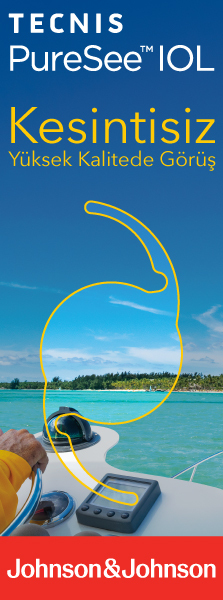TJ-CEO
2015 , Vol 10 , Num 1
A presenting as Retained Iridocorneal Angle Foreign Body Resembling to Disciform Keratitis A Case Report
1M.D Asistant Professor, Izmir University Faculty of Medicine, Department of Ophtalmology, Izmir/TURKEY2M.D, Special Alfagoz Eye Center, Izmir/TURKEY
3M.D. Associate Professor, Izmir University Faculty of Medicine, Department of Ophtalmology, Izmir/TURKEY Penetrating ocular trauma with intraocular foreign body is a serious injury often resulting in vision loss. Anterior chamber foreign bodies account for up to 15% of all intraocular foreign bodies. In this article we report a case of a retained intraocular foreign body at the iridocorneal angle which was misdiagnosed as disciform keratitis due to localized corneal edema. A 55-year-old male applied to our clinic with complaints of decreased vision and redness in his left eye for one month. At the initial examination, stromal edema involving the inferior half of the cornea, epithelial microcysts, and moderate anterior chamber reaction were observed. The appearance of suspicious full thickness corneal wound at high magnification led us to perform gonioscopy. A foreign body located at the inferior iridocorneal angle was observed with Goldmann 3-mirror goniolens. The foreign body was surgically removed and two weeks after surgery corneal edema began to resolve. This interesting case showed that retained intraocular foreign body might reveal itself as non-healing corneal edema and should be kept in mind in the differential diagnosis. Keywords : Corneal edema, foreign bodies, iridocorneal angle





